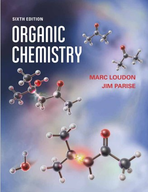Solution Found!
Explain why: (a) the rate of iodination of optically active 1-phenyl-2-methyl-1-butanone
Chapter 22, Problem 22.13(choose chapter or problem)
Explain why: (a) the rate of iodination of optically active 1-phenyl-2-methyl-1-butanone in acetic acid/HNO3 is identical to its rate of racemization under the same conditions. (b) the rates of bromination and iodination of acetophenone are identical at a given acid concentration
Questions & Answers
QUESTION:
Explain why: (a) the rate of iodination of optically active 1-phenyl-2-methyl-1-butanone in acetic acid/HNO3 is identical to its rate of racemization under the same conditions. (b) the rates of bromination and iodination of acetophenone are identical at a given acid concentration
ANSWER:Problem 22.13
Explain why:
(a) The rate of iodination of optically active 1-phenyl-2-methyl-1-butanone in acetic acid/ is identical to its rate of racemization under the same conditions.
(b) The rates of bromination and iodination of acetophenone are identical at a given acid concentration.
Step by step solution
Step 1 of 4
Chiral molecules do not possess a plane of symmetry. They give superimposable mirror images. Carbonyl compounds have functional groups. When treated with halogens, they form alpha-halo compounds and the reaction is named as alpha-halogenation.
